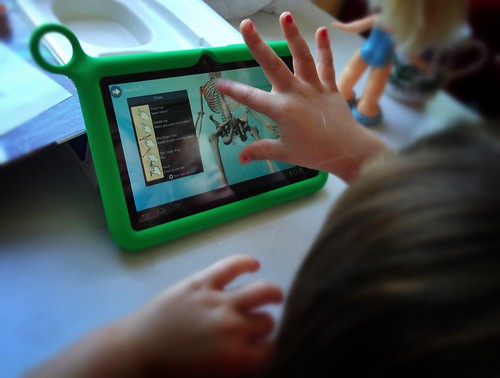Chapter Seven: Problem Solving and
Inquiry Learning with Software and Web Tools

Focus Question 6:
What are intelligent tutoring systems and how can students and teachers use
them successfully?
Intelligent tutoring systems are an instructional tool, they
present topics and track a student’s performance and correct answers and the
teaching approach can be adjusted by the teacher, based on the student’s needs.
Tech Tool 7.2: A Math
Learning Game-Zoombinis Logical Journey
The Zoombinis’ series was designed to teach critical
thinking, problem solving and mathematical learning to elementary school aged
students. Zoombinis are thumb-sized creatures with different types of
hairstyles, eyewear, and footwear. There are 625 different possible
combinations. The Zoombinis have embarked on a long journey to reclaim their
ancestral island home. Using trial and error learning, data analysis, logical
reasoning and theory building, the children playing the games guide the
Zoombinis through a series of obstacles and puzzles that block their journey.
While exploring the Zoombini Logical Journey game I think they are a great tool
since it is a game that keeps children interested with a plot, of getting the
Zoombinis back to their homeland, while the students have to use critical
thinking and problem solving, amongst other skills while playing the game.
Summary/ Interesting
Points:
I was not aware of the two different main types of software.
They are system software, which is responsible for overall functioning and
control of a computer. It includes the operating system, network operating
system, database managers, and a TP monitor. Application software performs
specific functions in specialized ways to produce a variety of services
including word processing, databases, spreadsheets, slides and presentations.
Bloom’s taxonomy is associated with the terms higher and
lower orders of thinking. This is an educational tool that was first presented
in 1956. Bloom and his collaborators were interested in distinguishing a
difference between different forms of thinking, from the basic recalling facts (lower
order) to comparison and evaluating theories (higher order).
Games make learning more fun. Children are more apt to learn
when a game is involved. Skill-learning games use elements of game play to
involve students in learning academic material. I liked reading about the
Zoombinis math game. I had never heard of it and after some googling I figured
out it is quite a popular learning game for students.
Sources:
Zoombinis Logical Journey. (n.d.). Children's Educational
Software and Computer Games for School Districts, Schools, Teachers, Parents
and Students. Retrieved October 9, 2013, from
http://www.smartkidssoftware.com/ndlec138.htm
Maloy, R. W., Verock-O'Loughlin, R., Edwards, S. A., &
Woolf, B. P. (2007). Problem Solving and Inquiry Learning with Software and Web
Tools. Transforming Learning with New Technologies (pp. 174-205).
Boston: Pearson.
Wayon Vota via Flickr
Zoombini has been popular for a number of years - fun to see that it is still being played. There is quite a bit of research now that shows the various benefits of gamification for learning - it will be interesting to see what happens in the future. :)
ReplyDelete